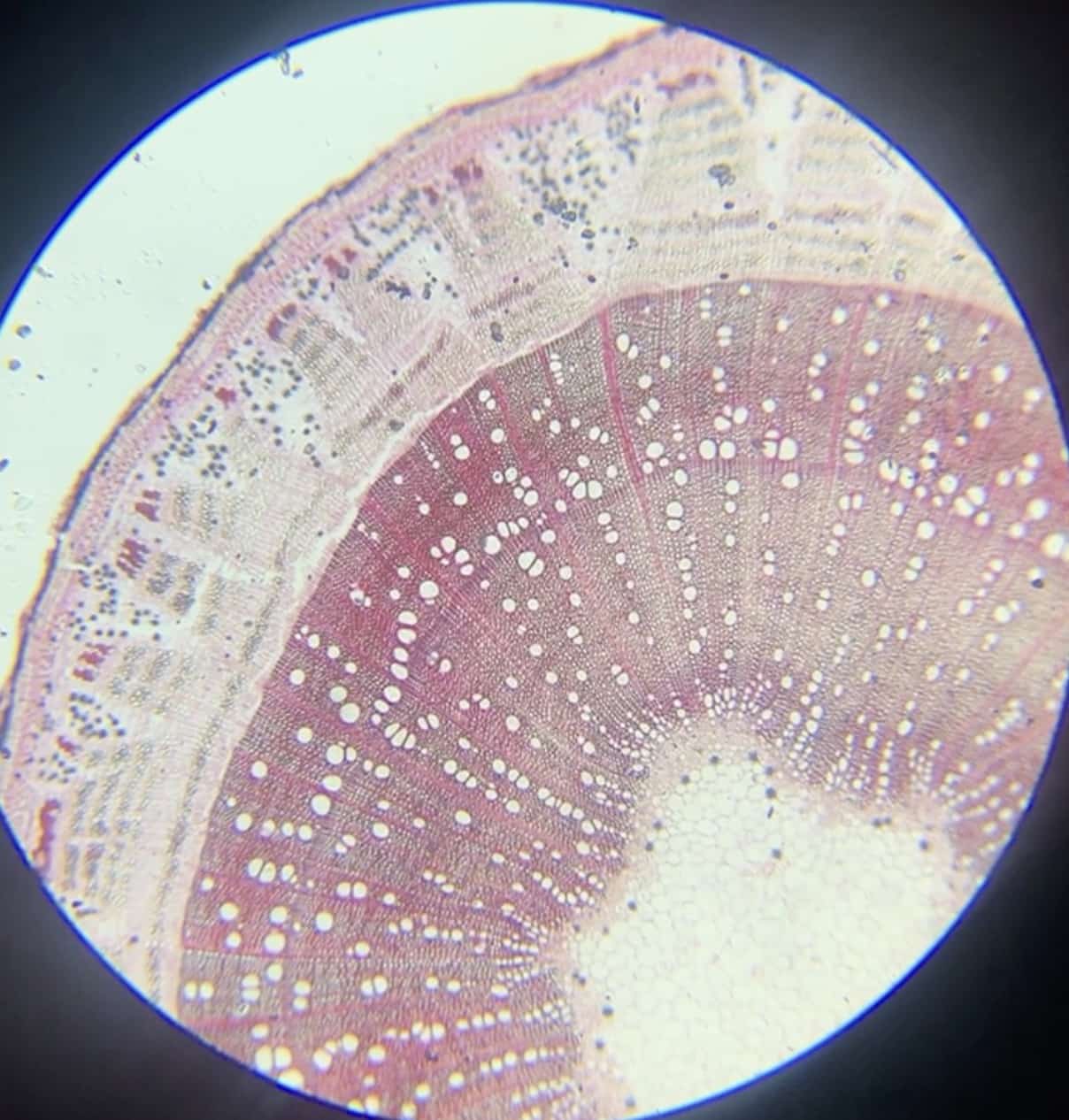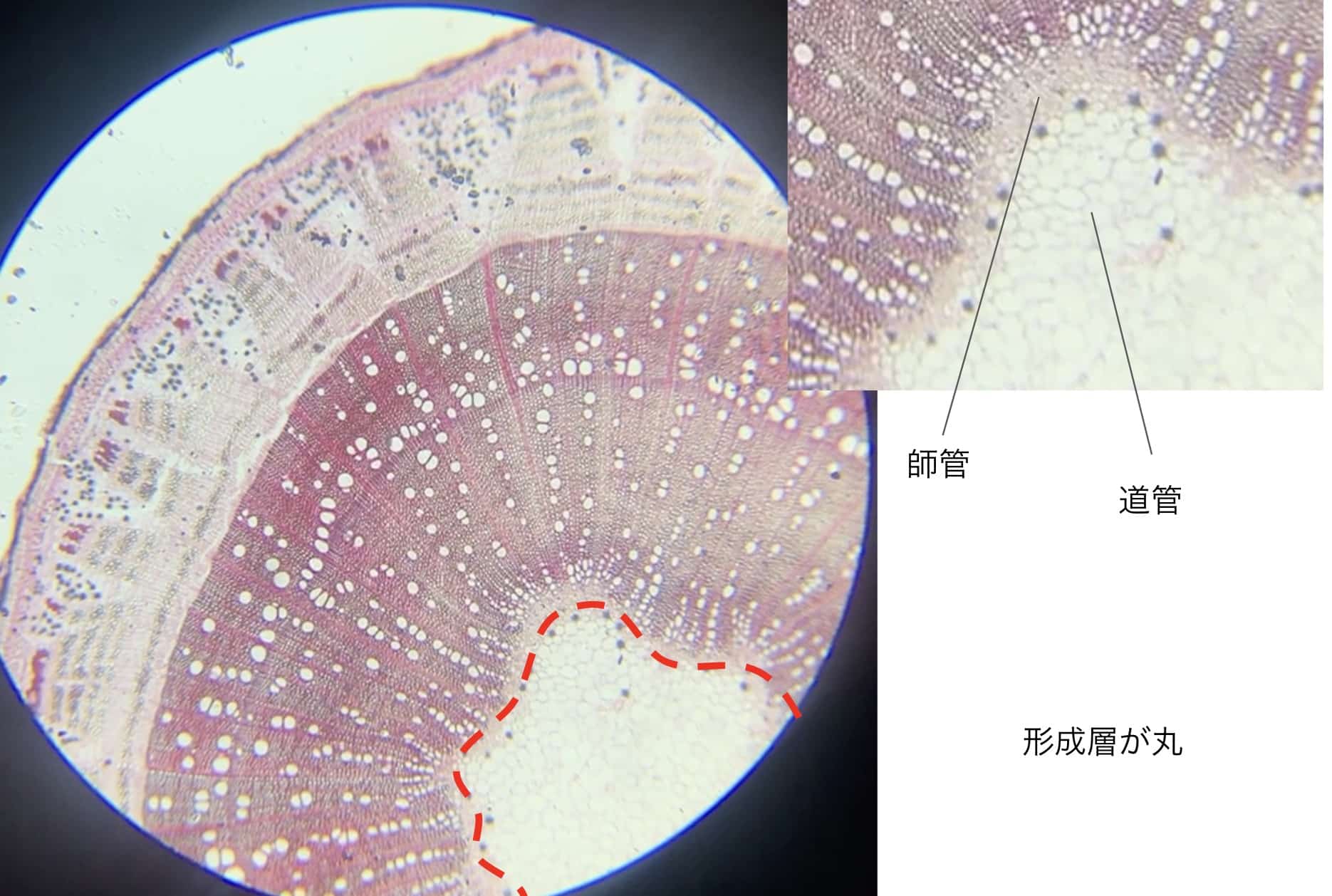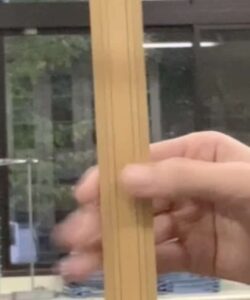Preparing a rose of Sharon stem with a slide kit is easy and the results are amazing! Don’t just ‘look’ at plants; here are some tips for effective observation.
[speech_bubble type=”rtail” subtype=”L1″ icon=”5.png” name=”桑子研”]I’m Ken Kuwako, the science trainer. Every day is an experiment. [/speech_bubble]
The internal structure of plants, especially their stems and roots, is often invisible to the naked eye. Because of this, it’s hard for students to even wonder, “Why is it built this way?” But this “stem cross-section observation” goes beyond just memorizing textbook knowledge. By seeing and doing, students can have a genuine “Aha!” moment where they truly understand how a plant lives!
In this article, we’ll use a hibiscus stem as an example to show you how to conduct an observation that unravels the secrets of a plant’s structure. No special equipment is needed—let’s build a lesson plan that uses everyday materials to spark students’ curiosity.
Observing a Plant Cross-Section
We observed a cross-section of a hibiscus stem using a prepared slide set for leaf sections. The hibiscus stem has a structure where the xylem vessels are at the center, with the phloem tubes arranged in a ring around them. It’s interesting to note that in many plants, the xylem vessels are always located toward the center.

I’m curious to see how well you can see things with a lower-cost set like this one from Artec.

amazon:Artec Plant Tissue Prepared Slide D
楽天:Artec Plant Tissue Prepared Slide D ATC-94740
Other things you’ll need
A microscope
A textbook or reference material with diagrams of vascular bundles
A notebook
The Procedure:
First, ask students, “How do plants pull up water?” Then, explain that a plant’s body has internal pathways for “water and nutrients.”


The xylem vessels are located in the center of the stem in every plant. Then, have students set up the slide on the microscope and sketch the stem’s cross-section.
After the observation, have them compare their sketches to the textbook diagrams and identify what they drew. Finally, review the key features: “xylem vessels are clustered at the center” and “phloem tubes are arranged around the xylem,” and then reinforce the role of each.
Dicotyledons vs. Monocotyledons
In dicotyledons like hibiscus, the vascular bundles in the stem are arranged in a ring. In monocotyledons like rice or corn, they are scattered randomly.
Comparing these differences can lead to a much deeper level of understanding.
Contact & Requests
We’ve compiled fun science experiments you can do at home, along with easy-to-understand tips. Feel free to search around!
・About the author, Ken Kuwako, click here
・For various requests (writing, lectures, science classes, TV supervision, appearances, etc.), click here
・Article updates are posted on X!
![]() Our Science Fun Channel posts experiment videos!
Our Science Fun Channel posts experiment videos!


